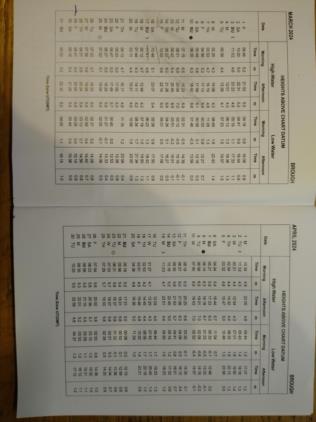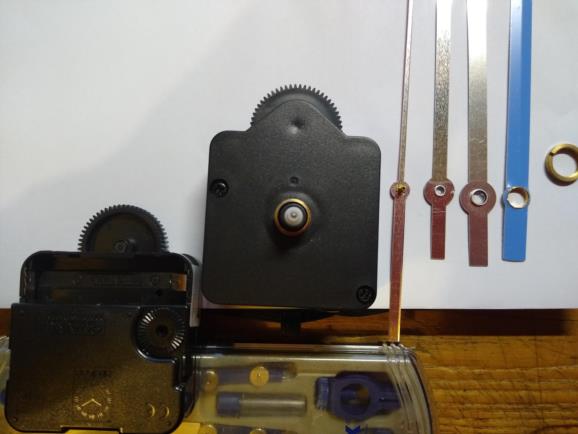
NavList:
A Community Devoted to the Preservation and Practice of Celestial Navigation and Other Methods of Traditional Wayfinding
From: David Pike
Date: 2024 Mar 18, 06:44 -0700
Geoff Hitchcox
Thankyou for the effort you’ve put into replying twice to this post. I’m sorry I haven’t replied sooner, but we had a Working Weekend at Humber Yawl Club this weekend, and I’m just back. I hope to reply in more detail shortly, but here’s a news update to be going on with.
Re: The white spot on the central cap. With a single hand tide clock, the hand goes round fractionally more slowly than an hour hand, so without listening for the ticking it’s almost impossible to check the clock is working. The spot of white paint goes around once per 62 seconds(ish), so it’s much easier to check if there’s life in your clock.
Re: Accuracy. These inexpensive clocks allow only for the motion of the Moon and ignore the Sun and planets. There’s also wind and the time it’s been blowing in a particular direction, barometric pressure, and local geography to consider, so nothing can be definite. Nevertheless, the Club does have tide tables for Brough printed (see photograph), which must cater for at least Moon, Sun, and planets. Someone with insomnia could go through the times of high water to check how far a Moon-only tide clock would be wrong. There are recording tide gauges all the way up the Humber, including one right outside Brough Haven, (See chart section at https://abpnotify.co.uk/AbpPublishedDocuments/_Upper%20Humber%20Bi-Monthly%20-%20February%202024.pdf), so presumably records must be available to anyone requesting access to them
Re: My clocks. After a week the values I set had wandered about 15 minutes. However, nobody else saw this, because I reset on Friday as I took them out of their boxes. By Saturday, for a 64-Member working weekend I barely had to touch them. Despite the online advice re the best time to set them, I’ve concluded that safest, most accurate method is to tweak them to the tables before every tide.
Re: How they work. Since writing, I’ve found a source of four handed tide clocks and bought a couple to experiment with (https://www.cousinsuk.com/product/tide-movements-with-time) . With these, the tide hand goes outside the usual three spindles and appears to be run though a limited-slip lay-shaft arrangement (See photograph), because there’s only one adjusting wheel on the rear, and that’s for the hours, minutes, and seconds hands. They’re inexpensive enough to take one to bits to check, so I’ll report back. Also, if I take a dud ordinary insert, and a one-handed tide clock insert to bits, and it turns out they have frequencies printed on the outside of the crystal cans, I ought to halfway towards finding where the 62 seconds (ish) centre spindle rotation originates; via the cut of the crystal tuning fork, a capacitor frequency dragger, or within the counter part of the stepper motor trigger chip. More to come soon DaveP








